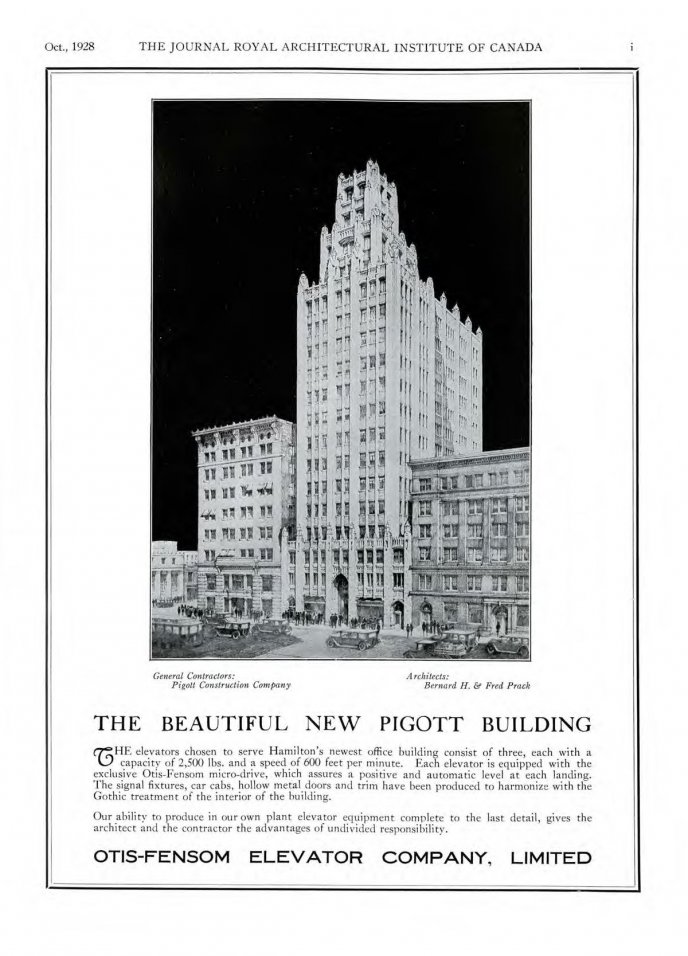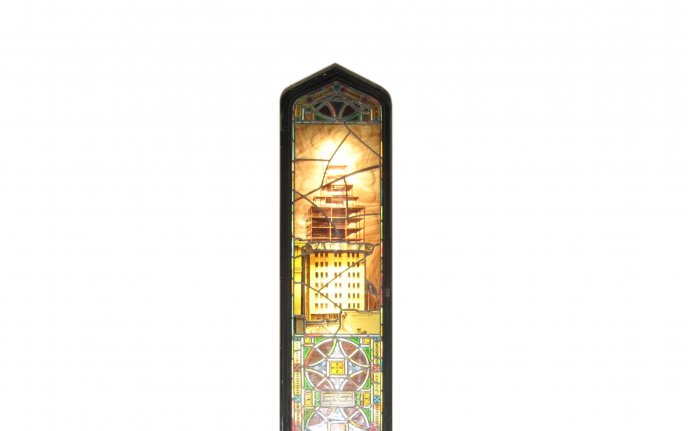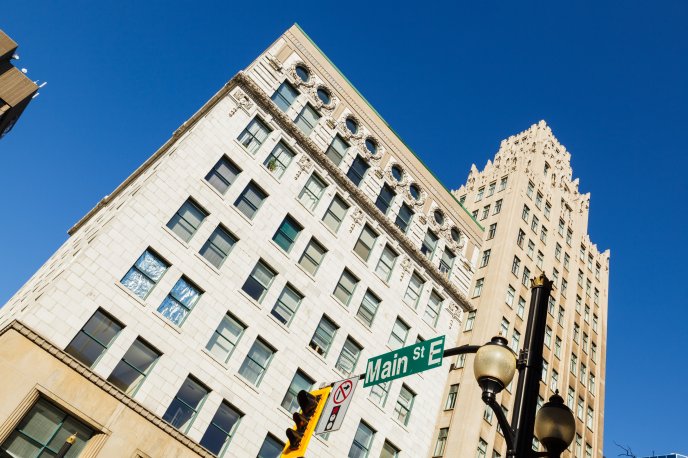When it first opened its doors in 1929, the Pigott Building was unlike anything Hamiltonians had seen before. At a height of 18 storeys, the tower was the city’s first skyscraper – an architectural spectacle meant to clearly position its developer and owner, the Piggott Construction Company, as a leader in its industry and an early adopter of the latest technologies.
Its slender and tall profile was made possible by moving away from load-bearing walls – the technique common for masonry and stone construction – and instead using a steel frame to create the building’s structural skeleton. This steel frame was then covered in carved Tyndall limestone on the exterior, and marble and tiles in the interior, applying a more traditional skin on the defyingly modern structure.
 Building as depicted in OTIS advertisement in RAIC Journal, 1929
Building as depicted in OTIS advertisement in RAIC Journal, 1929
A Building That Tells Its Story.
While the average passerby would be hard-pressed to guess that a steel skeleton lies underneath this limestone tower, there is one place where the Pigott Building provides a “behind the scenes” tour of its construction.
Located in the lobby are six stained-glass windows telling the story of the tower, and the people and the company behind it. The central window, flanked by a carpenter on one side and an architect on the other, depicts the partially finished Pigott tower – the upper floors are shown incomplete in order to reveal the steel skeleton underneath.

Stained glass window depicting the Pigott Building under construction.
Nhl4hamilton, Wikipedia (cropped)
Reinvention
Despite its popularity over the decades, the Pigott Building faced challenges in the late 1970s, changing hands several times before emptying out in the early 1980s. It was then that many of the pieces of the Pigott Building, including its marble and doors (and handles), were sold and the elevators were shut down to save on electricity. Even its stained-glass windows – with their beautiful imagery depicting the people behind the tower’s construction – were lost.
It would take more than a decade – and some out-of-the-box thinking – for the Pigott Building to come back to life.
The building got a new lease on life in the 1990s through an adaptive reuse project that converted the former commercial tower into 109 residential units. This rehabilitation strategy allowed for many of the building’s original features and exterior elements to be restored, including bringing back the stained glass in the lobby.
Today, the Pigott Building stands as a testament to Hamilton’s thirst for reinvention and the latent potential of its large stock of heritage buildings – all ready to be brought back to life through creative adaptations for 21st century living.

Courtesy of Tourism Hamilton
This post forms part of our World Architecture Day Queen’s Park Picks 2018 series in which we asked Ontario’s Members of Provincial Parliament to nominate a prominent building, past or present, in their riding for a chance to learn more about it. Check out the rest of the series to learn more about great buildings across the province!
Additional Sources
“The Beautiful New Pigott Building” (advertisement) in The Journal of the Royal Architectural Institute of Canada, Vol. V, No. 10, October 1928
Houghton, Margaret. Chapter 14: “Pigott building reached 210 feet into the skyscape,” in First Here: What Happened when in Hamilton. pg.51-52
Rubino, Antonietta. Downtown Revitalization: The Hamilton Experience. Waterloo, Canada 2016
Freeman, Bill. Hamilton: A People’s History. 2006